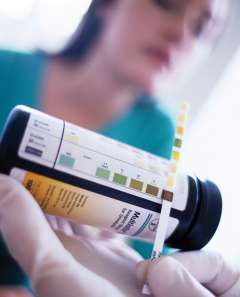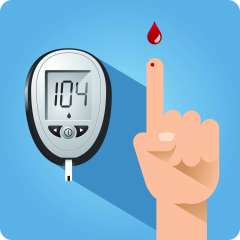Sick Day Plan
Find your care
You receive customized, exceptional diabetes treatment and education in a caring environment. Call 310-825-7922 to connect with a diabetes specialist.
During times of illness, blood glucose levels might be affected, so it is important to be prepared to manage your diabetes as well. Each illness and person is unique, but often during times of infections or fever, blood glucose levels tend to increase while in times of nausea/vomiting and diarrhea, blood glucose levels might decrease.
Consult your doctor for any question regarding which medications are safe to take while being sick.
Below are some general recommendations on when to call your doctor and how to manage blood glucose levels during times of illness.
Red zone – call your doctor

- Glucose remains above 300 mg/dL for more than six hours or below 70 mg/dL after repeated treatment
- Vomiting and diarrhea occur for more than six hours
- You are dehydrated: very dry mouth, can’t urinate after four hours, rapid weight loss since becoming ill
- Confusion, sleepiness, seizures
Recommendations
Call your doctor. Information to have ready:
- Blood glucose test results. If you have urine ketone strips at home, consider checking and presenting these results as well.
- Symptoms you have had, including fever, nausea, diarrhea and vomiting
- Medication(s) you have taken, including times and doses of insulin
- What you have had to eat and drink
Yellow zone – caution

- Glucose testing is greater than 180 mg/dL more than once in six hours
- Symptoms of high blood glucose are present: thirst, dry mouth, blurred vision, frequent urination
- Nausea, vomiting or diarrhea interfere with eating and drinking
- Fever
- Glucose test lower than 70 mg/dL more than once in six hours
Recommendations
- Check blood glucose at least every four hours and record results
- Continue to take your insulin
- Drink at least 4 ounces (half cup) of fluids every 30 minutes
- Fluids should be sugar-free unless blood glucose is low or you are replacing a meal with liquids. Treat low glucose with 15 grams of carbohydrate and retest in 15 minutes; repeat treatment every 15 minutes until glucose is above 100 mg/dL
Green zone – all clear
- Blood glucose within goal range of 70-180 mg/dL
- Taking usual insulin doses
- Eating and drinking normally
- No fever
Recommendations
- Diabetes is within the target goal
- Continue to check blood glucose 4 times per day or wear continuous glucose monitor
- Continue to take your diabetes medication(s)
- Keep on hand: fluids with sugar (such as apple juice), fluids with salt (such as broth) in case of low sugars or dehydration
Soft foods
Soft foods may be an option during illness. They are usually easy to eat and require little preparation. Below is a sample menu to consider during periods of illness.
Breakfast
- 1 cup skim milk
- ½ cup cooked Cream of Wheat and 1 slice toast
- ½ cup canned fruit
Lunch
- 2 oz. cheddar cheese
- 1 cup tomato soup
- 6 saltine crackers
- ½ cup applesauce
Dinner
- 1 cup cottage cheese or tuna
- 1 cup vegetable soup
- 1 English muffin
- 1 cup sugar-free Jell-O
Bedtime snack
- ½ cup sugar-free pudding
- ¼ cup cottage cheese or 1 oz. cheddar cheese
- ½ cup canned fruit
Clear liquids
If your blood glucose is in the target range (70-180 mg/dL) or as per your diabetes health team specific recommendations, and you cannot tolerate soft foods, try sipping clear liquids. The following items are examples of clear liquids containing 15 grams of carbohydrates:
- ½ cup apple or cranberry juice
- ½ cup regular soda
- ½ cup regular Jell-O
- 1 cup Gatorade
- 1 cup broth-based soup
- 1 popsicle